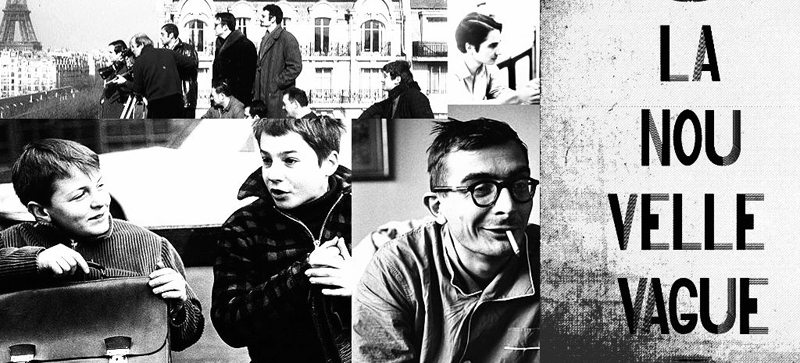The New Wave
03.30.2018Birth of the New Wave, by Françoise Zamour
« The film of tomorrow seems to me more personal than a novel, as individual and autobiographical as a confession or a diary». When he wrote these words back in 1957, François Truffaut summed up the hope and ambitions of a generation of impatient young critics, eager to shoot their first film.
Rejecting the cinema in vogue, peppered by easy provocations and the words of authors, they uphold new and conflicting tutelary figures: Renoir, Bresson, Cocteau and Rossellini. Most of all they adore American films. Films directed by Orson Welles, Hitchcock and Hawks, discovered at the Cinematheque, commented on and analysed under the aegis of André Bazin in the pages of the film magazine Cahiers du cinéma, all inspired their new « authors’ theory ». They followed this theory with vigour: in the cinema, the real author is the director. His (or her) style reveals a personal vision of the world and appears in every film as that person’s signature. In the image of these masters, they will be the authors.
From 1958 to 1962, films kept coming in quick succession like waves on a beach. Le Beau Serge and Les Cousins by Chabrol; Les Quatre cents coups (The 400 blows) and Tirez sur le pianiste (Shoot the piano player) by Truffaut; A Bout de souffle (Breathless) by Godard; Hiroshima mon amour ( Hiroshima my love) by Resnais, Lola by Jacques Demy showed lots of different ways of seeing the world. The films dazzled like flashes of lightning, bringing French cinema bang up to date. A new generation of actors lit up the screens: Jean-Claude Brialy, Jeanne Moreau, Jean-Paul Belmondo and Anna Karina brought their unique voices and audacious airiness to some films. Dialogues, as if snatched from tables at cafes or from street conversations, were sometimes written during the shoot itself or improvised on the spot – so in keeping with the mood of the times. Responsive rolls of film, new lightweight cameras and direct sound recordings meant that film-makers could focus on natural scenery, reduce team numbers and budgets, find lighting without special effects and allow reality to blossom in every shot.
The CNC (National Cinema Centre) was inspired by a cover of the Express on youth to baptise the New Wave with this proxy generation. However, the birth of the movement can be summed up in just one shot. It is the look in the eyes of Jean-Pierre Léaud as he stops running into the sea and gazes directly into camera. This, the final image in the film Quatre cents coups (The 400 blows), is the money shot that stuns the audience and reinvents film-making in the process.
Françoise Zamour, a previous student of the École normale supérieure de Paris, graduated with the Agrégation in Classical littérature, is a Doctor in cinematographic studies and the Director of Études de lettres at the École normale supérieure of Paris.


